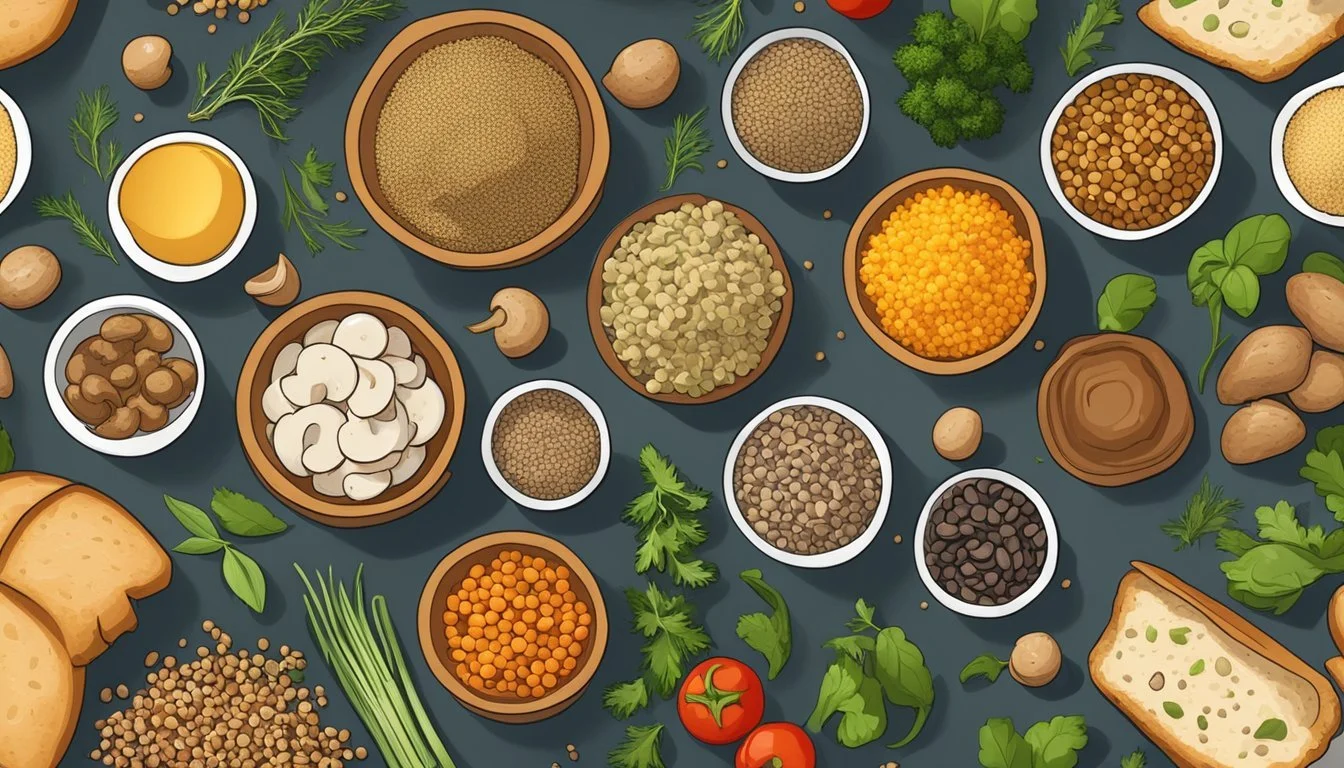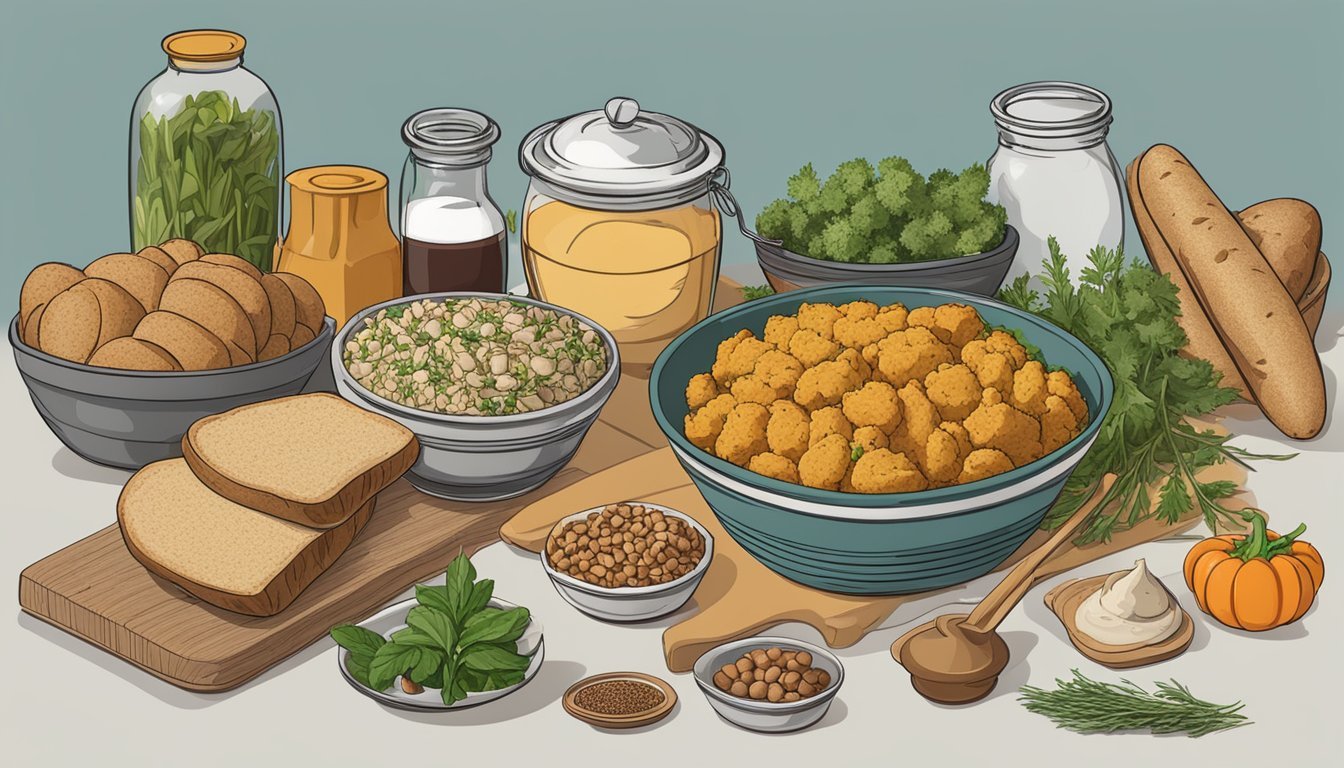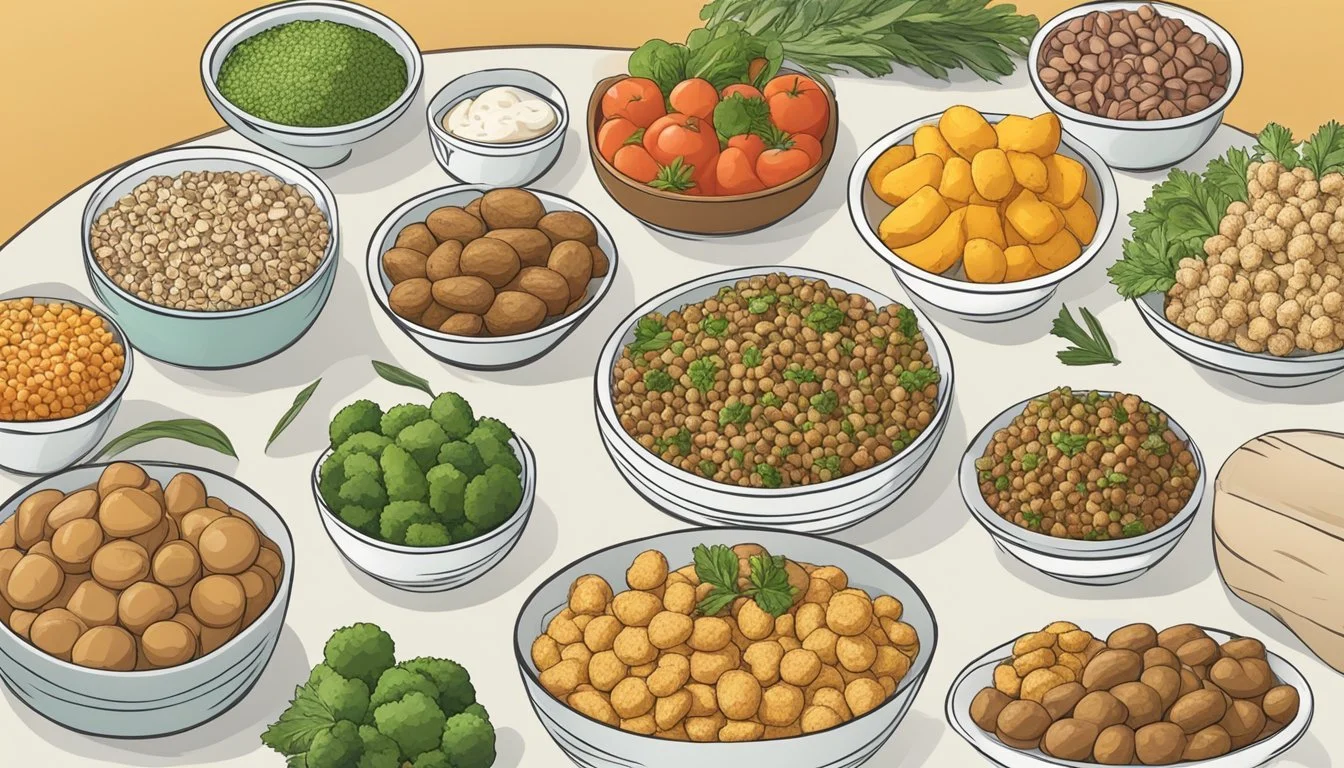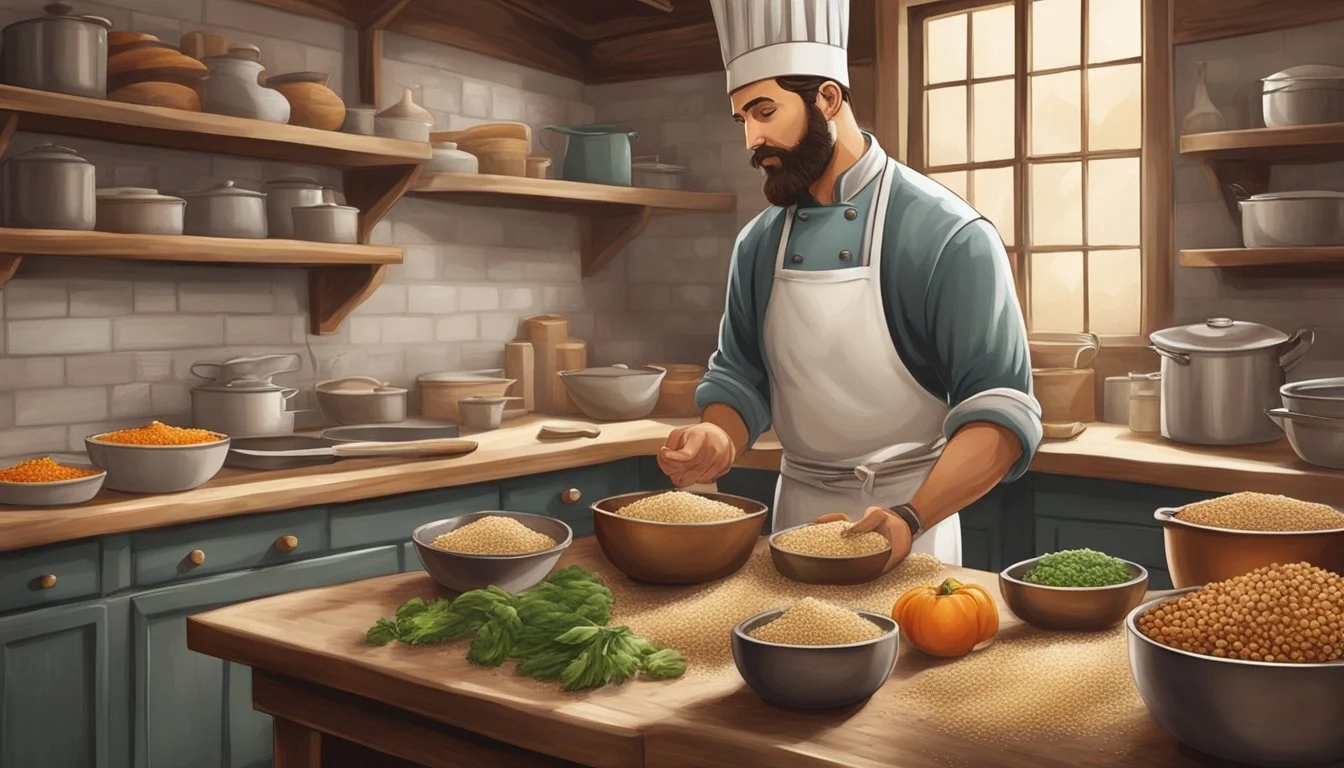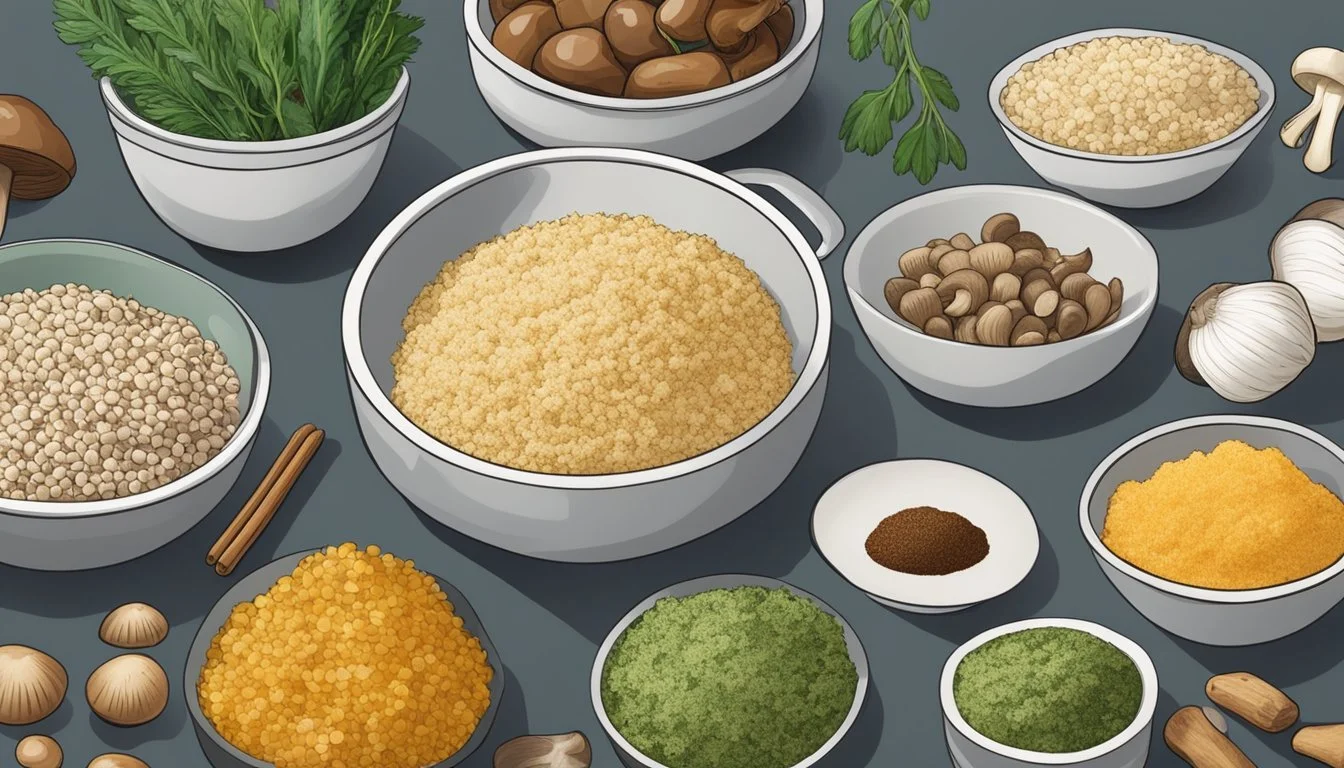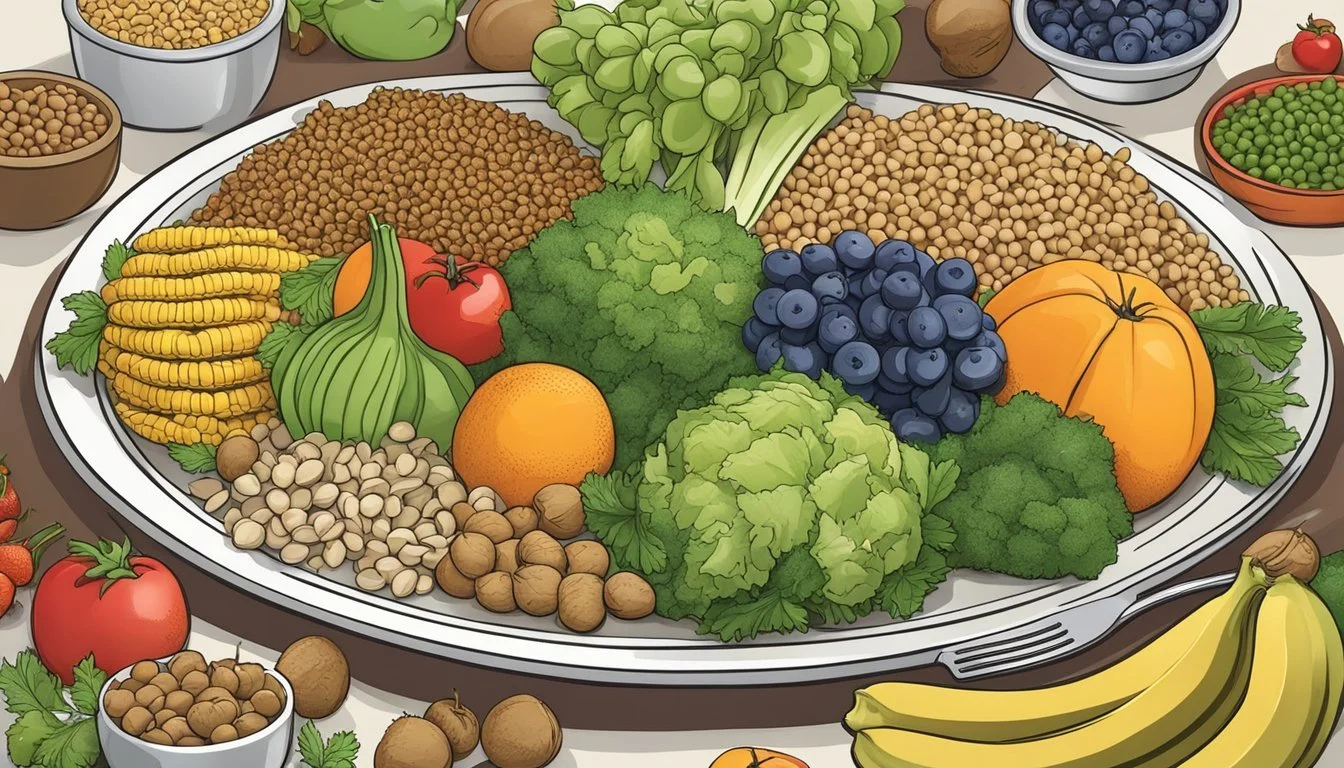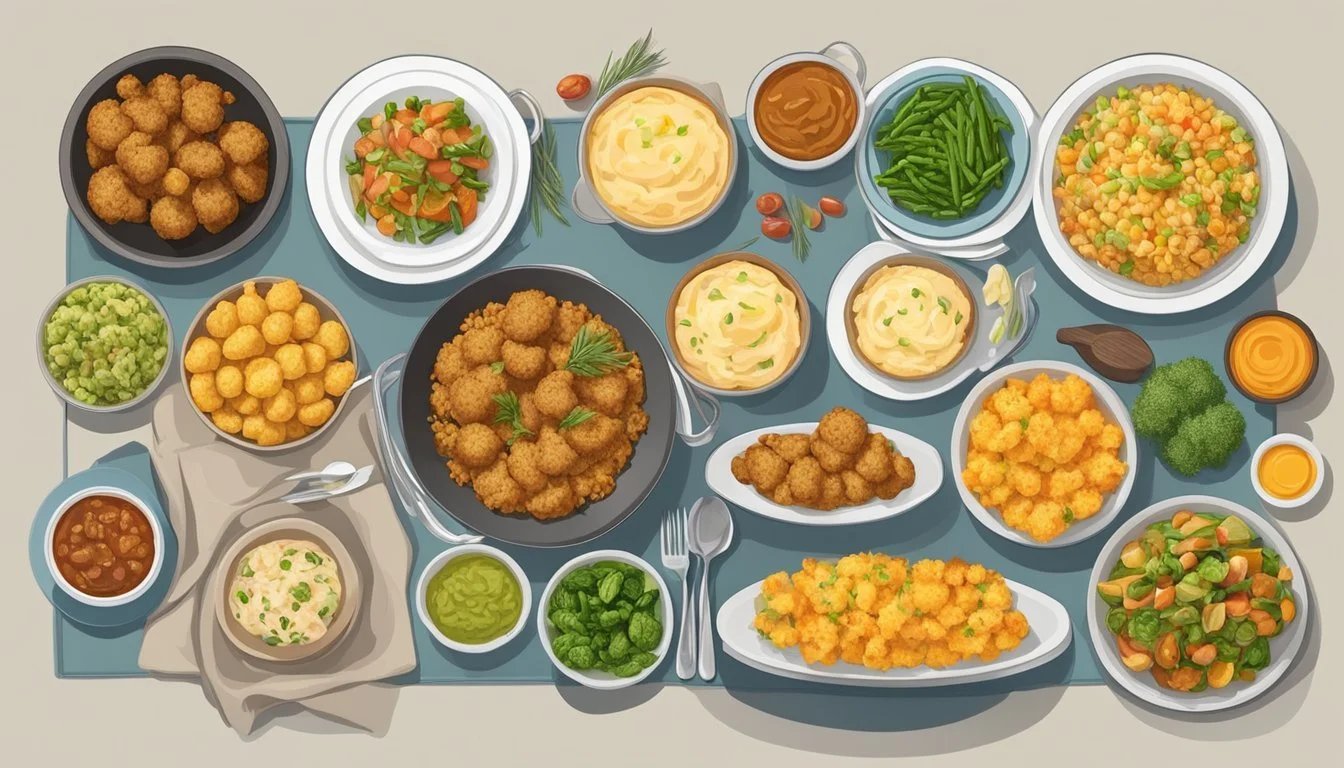Stuffing Substitutes
Healthy and Tasty Alternatives for Your Feast
Stuffing has long been a staple of holiday meals, especially during Thanksgiving, where it serves as a beloved side dish. Traditional stuffing brings a mix of savory flavors and soft, satisfying textures to the dinner table, often featuring a bread base seasoned with herbs and spices. However, as culinary preferences and dietary needs evolve, many people now explore alternative ingredients that provide a different spin on flavor while respecting health considerations, like gluten sensitivities.
Substitutes for classic stuffing vary widely, from grains and starchy vegetables to unconventional options such as pretzels and crackers. These alternatives are not just solutions for those who avoid gluten but also for anyone looking to infuse their holiday meal with a twist. The beauty of stuffing lies in its versatility; nearly any base can absorb the traditional seasonings and harmonize with the rest of the dishes served.
Moreover, alternatives often retain the essence of traditional stuffing - a medley of flavors that complement the main course, usually turkey, without overpowering it. Some variations even draw inspiration from different cultures, introducing a range of palates to the holiday feast with ingredients like sofrito or meat-stuffed potato balls. Flexibility is key in creating a side dish that satisfies both the expectations of a holiday classic and the excitement for something new.
Understanding Stuffing
Stuffing is a time-honored component of many festive meals, known for its flavorful blend of ingredients. It serves as a crucial side dish that complements the main course and has a rich history with various recipe adaptations.
The Role of Stuffing in Meals
In culinary tradition, stuffing plays a pivotal role as a side dish that not only adds to the plate but enhances the overall flavor profile of the meal. It is often associated with holiday meals like Thanksgiving and Christmas, where it offers a savory counterpoint to dishes such as roasted turkey or chicken. In the context of a meal, stuffing is expertly designed to absorb the juices from the main course, enriching its own texture and taste.
Primary Function: Enhances main dish, provides savory counterpart
Occasions: Holiday meals (e.g., Thanksgiving, Christmas)
Historical Context and Variations
The origins of stuffing trace back to the Roman Empire, showing its longevity and cultural significance. Over time, various regional recipes and variations have developed, with ingredients reflecting local flavors and traditions. Common in the United States are bread stuffing and cornbread stuffing, while other cultures may incorporate rice, barley, or other grains. Each variation provides a unique taste experience shaped by its historical context.
Bread Stuffing: Commonly uses cubes of white bread or cornbread
Global Variants: Include rice, barley, and local ingredients
Key Ingredients in Traditional Recipes
Traditional stuffing recipes often start with a base of dried white bread or cornbread, complemented by a mix of aromatic vegetables like onions and celery. Herbs such as sage, thyme, and parsley are staples for imparting the classic flavor associated with the dish. In some recipes, stuffing mixes provide a convenient blend of these key ingredients. This facilitates a quick preparation method, typically involving the addition of water or broth and baking in an oven.
Base Ingredients: Dried bread (white or cornbread), aromatic vegetables (onions, celery)
Herbs and Flavors: Sage, thyme, parsley
Preparation: Often baked in an oven, sometimes cooked inside poultry
Health and Nutrition
When considering stuffing alternatives for health and nutrition, one should focus on the caloric content, nutrient profile, and suitability for various dietary needs. Specific substitutes can significantly alter the nutritional value of a meal, offering benefits like reduced carb load, increased fiber, or accommodating dietary restrictions.
Caloric Content and Nutrients
Traditional stuffing can be high in calories and carbs due to ingredients like bread and sausage. Replacing sausage with leaner protein sources such as chicken or turkey can reduce fat and cholesterol intake. Adding vegetables such as Brussels sprouts or cauliflower increases the fiber content and decreases the overall calorie count. Incorporating nuts adds healthy fats and protein, making the dish more nutrient-dense.
Fiber: Adding vegetables.
Protein: Lean meats or nuts.
Carbs: Reduced with vegetable alternatives.
Calories: Lower with lean proteins and high-fiber vegetables.
Fat: Reduced by using less sausage or butter.
Gluten-Free and Low-Carb Options
For individuals on a gluten-free or low-carb diet, stuffing can be modified using ingredients like cauliflower or nuts as bases. These ingredients not only provide essential nutrients but also significantly cut down on gluten and carbs.
Cauliflower offers a rice-like texture and is rich in vitamins and low in carbs.
Nuts provide a crunchy texture and are high in protein and healthy fats, but low in carbs.
Vegan and Dairy-Free Alternatives
Vegan and dairy-free alternatives to traditional stuffing avoid animal products, offering plant-based protein sources and excluding cholesterol. Ingredients such as eggplant, mushrooms, and olive oil serve as the foundation for these substitutes.
Eggplant: Low in calories, provides fiber.
Mushrooms: Offer umami flavor, low in fat.
Olive oil: Healthy fat, used instead of butter.
By selecting the right combination of ingredients, one can create a stuffing alternative that not only meets dietary needs but also contributes positively to the overall nutritional profile of a meal.
Stuffing Ingredients Alternatives
When crafting a stuffing dish, alternatives to traditional ingredients can offer new flavors and accommodate dietary restrictions. This section explores thoughtful replacements for bread, fats, and seasonings to tailor stuffing to specific needs and preferences.
Bread Substitutes
In stuffing, bread acts as the primary structure and absorbs flavors. To cater to different dietary needs or to simply switch things up, here are some alternatives:
Gluten-Free Options: Replace white bread with gluten-free bread, breadcrumbs, or grains like wild rice for texture without the gluten.
Variety in Grains: Substitutes like cubed bagels, French bread, or Italian bread can add unique flavors and textures, ranging from denser to crustier.
Rice and Other Grains: Cooked wild rice or even quinoa can provide a nutty flavor and keep the dish hearty.
Fat Replacements
Fat adds moisture and richness to stuffings. If one is looking to replace traditional fats like butter, these substitutes maintain moisture while offering varied health benefits:
Plant-Based Oils: Olive oil and vegetable oil are excellent liquid alternatives, contributing to a moist texture with a lighter feel.
Solid Fats: Margarine can be a direct substitute for butter, especially if seeking a vegan option.
Fruit-Based: Applesauce can be used as a substitute for fat in some stuffing recipes where a slight fruit undertone would be complementary.
Flavor Enhancers and Seasonings
Stuffing's character comes from its blend of herbs and spices. Here are options to diversify or replace traditional seasonings:
Herbs: Staples like sage, thyme, and parsley can be used fresh or dried. Experimenting with their ratios can change the flavor profile of the stuffing.
Spices: Incorporating a variety of spices can add depth. Garlic powder or fresh minced garlic can infuse the dish with robust flavor.
Mix and Match: Don't hesitate to try different combinations of spices to find the perfect blend for one's specific taste.
Recipe Adaptations
When adapting stuffing recipes, one can integrate a variety of ingredients and techniques to enhance flavor, accommodate dietary preferences, and celebrate cultural traditions.
Transforming Traditional Stuffing
Traditional stuffing often includes a mix of cubed bread, onions, celery, and various herbs. Homemade stuffing can be easily modified for those looking for a gluten-free option by replacing conventional bread with alternatives like stale gluten-free bread or soft pretzels torn into bite-size pieces. Additionally, incorporating ingredients such as mushrooms and leeks adds depth to the savory profile, while a splash of broth ensures the dressing remains moist.
Cultural and International Twists
Stuffing reflects the culinary diversity of cultures around the world. A Cuban-inspired stuffing might incorporate sofrito with a flavorful mixture of picadillo and seasoned potatoes. On the other side of the globe, a Middle Eastern variant could include raisins, walnuts, and a blend of aromatic herbs. These regional adaptations not only offer a taste of cultural heritage but also provide a memorable experience for guests.
Festive Additions for Special Occasions
For holiday celebrations or special occasions, festive ingredients elevate stuffing from a simple side dish to the centerpiece of a meal. Mixing in diced apples and pears imparts a subtle sweetness, which contrasts pleasingly with the savory elements of the blend. Carrots and sweet potatoes add a touch of festive color and texture, while mashed potatoes or a sweet potato casserole can serve as a rich, creamy base for a deconstructed version of the traditional stuffing.
Cooking Techniques and Tips
Mastering the art of stuffing substitutes requires attention to texture and moisture and employing various baking strategies to enhance flavor and presentation. These techniques ensure a dish that is both aesthetically appealing and delicious.
Achieving Desired Texture and Moistness
When crafting a stuffing substitute, texture plays a pivotal role. For a moist texture, one should ensure ample but not excessive liquid is present. If the substitute is bread-based, it should be stale; fresh bread can be made stale by toasting it in the oven at 200 degrees for 10 minutes. Using soft pretzels as an alternative can also yield a satisfyingly dense and moist texture.
To add crunch or crispiness, consider:
Cooking the stuffing on a cookie sheet: This method promotes an even crispness and can be done at a higher temperature such as 400 degrees.
Rolling technique: Rolled stuffing, such as using sheets of filo pastry with a lamb filling, should be brushed with butter or oil to encourage a crispy exterior.
Baking and Presentation Strategies
The baking process is crucial in achieving the final taste and look of a stuffing substitute. For a visual appeal worthy of Instagram, one must present the dish with a balance of color and texture. Here are specific strategies:
Oven placement: Positioning the dish in the upper third of the oven can contribute to browning and crispiness.
When serving, gravy can be drizzled strategically over the dish, adding sheen and enhancing its visual appeal while also contributing to the flavor.
Follow these techniques for successful execution of stuffing alternatives, ensuring a memorable addition to any meal.
Selecting Stuffing Substitutes
When choosing substitutes for stuffing, the key considerations include their availability in the market and whether one should opt for homemade or store-bought alternatives.
Market Availability
Substitutes for traditional stuffing ingredients are widely accessible in most markets. Whether one seeks butter alternatives such as olive oil and margarine, or stuffing mix replacements like almond flour or rice flour, they are typically readily found on supermarket shelves. These substitutes not only maintain the moisture and texture one desires in stuffing but can also introduce new flavors.
Butter Alternatives:
Olive oil
Margarine
Coconut oil
Stuffing Mix Replacements:
Bread crumbs
Homemade Versus Store-Bought
The decision between homemade and store-bought substitutes for stuffing can affect both the taste and nutritional content of the dish. One can create a homemade blend of herbs and spices in place of store-bought poultry seasoning to tailor the flavor to one's preference, or opt for less processed, more natural ingredients.
Homemade:
Blend of sage, thyme, marjoram, and rosemary.
Broth made from scratch for moisture.
Store-Bought:
Pre-packaged stuffing mix substitutes.
Ready-made broth for convenience.
When one selects homemade substitutes, they typically have more control over what goes into their stuffing, potentially resulting in a fresher taste and reduced sodium levels. Conversely, store-bought alternatives offer convenience and consistency, making them a viable option for those short on time.
Nutritional Balance and Dietary Considerations
When considering stuffing substitutes, one must pay close attention to nutritional balance and dietary considerations. Nutrients play a vital role in overall health, and balancing carbohydrates, fiber, protein, fat, and cholesterol is key to a health-conscious stuffing alternative.
Substitutes that incorporate vegetables like Brussels sprouts, cabbage, and potatoes not only offer an array of nutrients but also contribute valuable fiber, promoting digestive health. Fiber-rich ingredients can make the dish more satiating, which may help with portion control and weight management.
Protein is another crucial nutrient, and incorporating sources like sausage or chicken livers can enhance the nutritional profile of stuffing while adding flavor diversity. Vegetarian sources such as pecans and walnuts provide protein as well as healthy fats.
It's important to consider the fat content of stuffing alternatives. While fats are essential, they should come from quality sources such as nuts or olive oil rather than processed meats or excessive butter.
Those monitoring their cholesterol intake might opt for low-carb ingredients like roasted cauliflower or crushed pork rinds, which are also suitable for keto diets. Additionally, certain ingredients like oysters and water chestnuts may be incorporated but in moderation due to their specific nutritional profiles.
For bread substitutes, ingredients like soft pretzels may be used. However, one should be mindful of their potentially higher carbohydrate counts and seek out whole grain or lower-carb options where possible.
In summary, a healthful stuffing substitute can be crafted by carefully selecting ingredients that provide a balance of nutrients while accommodating dietary preferences and restrictions.
Pairing with Main and Side Dishes
When planning a menu, it’s essential to consider how the flavors and types of dishes complement and contrast with one another to create a harmonious meal experience.
Complementing The Main Course
For a traditional Thanksgiving feast, stuffing often plays a vital role alongside the main course. If one opts for a vegetarian option, using vegetable broth in the stuffing ensures the dish remains flavor-forward while accommodating dietary preferences. On Christmas, one might pair the stuffing with a savory main such as roast goose or duck, and enhance the stuffing with chicken broth or stock for a richer taste that stands up to the robust flavors of the meat.
Main Course Ideas:
Vegetarian Thanksgiving:
Stuffing with Vegetable BrothChristmas Roast:
Stuffing enhanced with Chicken Broth or Stock
Harmonizing with Side Selections
Introducing a variety of side dishes can elevate the meal by offering a range of flavors and textures. Creamy sauces in the stuffing, or bread cubes baked to a golden brown, add a comforting consistency and appealing crunch that can balance softer sides like mashed potatoes. Adding herbs such as rosemary, thyme, and sage to the stuffing infuses it with a fragrant aroma, aligning well with sides like steamed green beans or a crisp kale Caesar salad.
Side Dish Pairings:
Savory Sides:
Mashed Potatoes
Steamed Vegetables
Herbaceous Complements:
Rosemary, Thyme, Sage
Kale Caesar Salad

